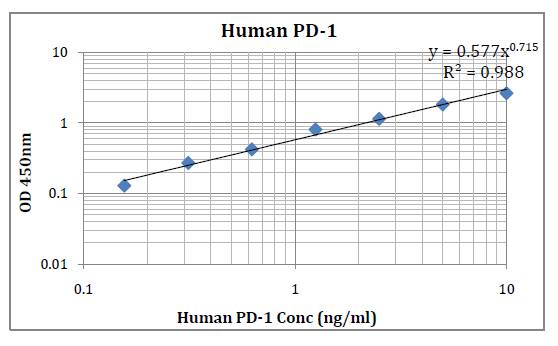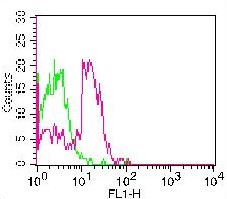Monoclonal Antibody to OPG (Clone: ABM10D2 )

Fig-1: Western blot analysis of OPG. Anti-OPG antibody (Clone: ABM10D2) was used at 4 µg/ml on Hela lysate.
Roll over image to zoom in
Shipping Info:
Order now and get it on Friday April 25, 2025
Same day delivery FREE on San Diego area orders placed by 1.00 PM
| Format : | Purified |
| Amount : | 100 µg |
| Isotype : | Mouse IgG1, Kappa |
| Purification : | Protein G Chromatography |
| Content : | 25 µg in 50 µl/100 µg in 200 µl PBS containing 0.05% BSA and 0.05% sodium azide. Sodium azide is highly toxic. |
| Storage condition : | Store the antibody at 4°C, stable for 6 months. For long-term storage, store at -20°C. Avoid repeated freeze and thaw cycles. |
| Gene : | TNFRSF11B |
| Gene ID : | 4982 |
| Uniprot ID : | O00300 |
| Alternative Name : | Tumor necrosis factor receptor superfamily member 11B, Osteoclastogenesis inhibitory factor, Osteoprotegerin |
| Immunogen Information : | A partial length recombinant protein (a.a 15-206) of OPG was used as the immunogen for this antibody. |
OPG (Osteoprotegerin) belongs to the TNF receptor super-family and is implicated in bone remodeling and in the atherosclerotic process. This molecule acts as a decoy receptor for the RANKL (Receptor Activator of Nuclear Factor-KappaB Ligand), inhibiting binding of RANKL to its receptor, RANK. OPG acts as a soluble neutralizing receptor of TRAIL (TNF-Related Apoptosis-Inducing Ligand), an anti-inflammatory molecule with anti-atherosclerotic properties. Mostly implicated in bone remodeling, the RANK/RANKL/OPG axis is involved in immune and vascular system. OPG has been associated with increased risk of atherosclerotic disease in the general population. OPG has also been associated with increased pulse wave velocity, progression of arterial calcification and with mortality in both end-stage renal failure patients as well as the general population.
WB: 4-6 µg/ml, FACS: 0.5-1 µg/10^6
For Research Use Only. Not for use in diagnostic/therapeutics procedures.
| Subcellular location: | Secreted |
| Post transnational modification: | The N-terminus is blocked. |
| Tissue Specificity: | Highly expressed in adult lung, heart, kidney, liver, spleen, thymus, prostate, ovary, small intestine, thyroid, lymph node, trachea, adrenal gland, testis, and bone marrow. Detected at very low levels in brain, placenta and skeletal muscle. Highly expressed in fetal kidney, liver and lung. |
| BioGrid: | 111028. 2 interactions. |
|
There are currently no product reviews
|






















.png)












